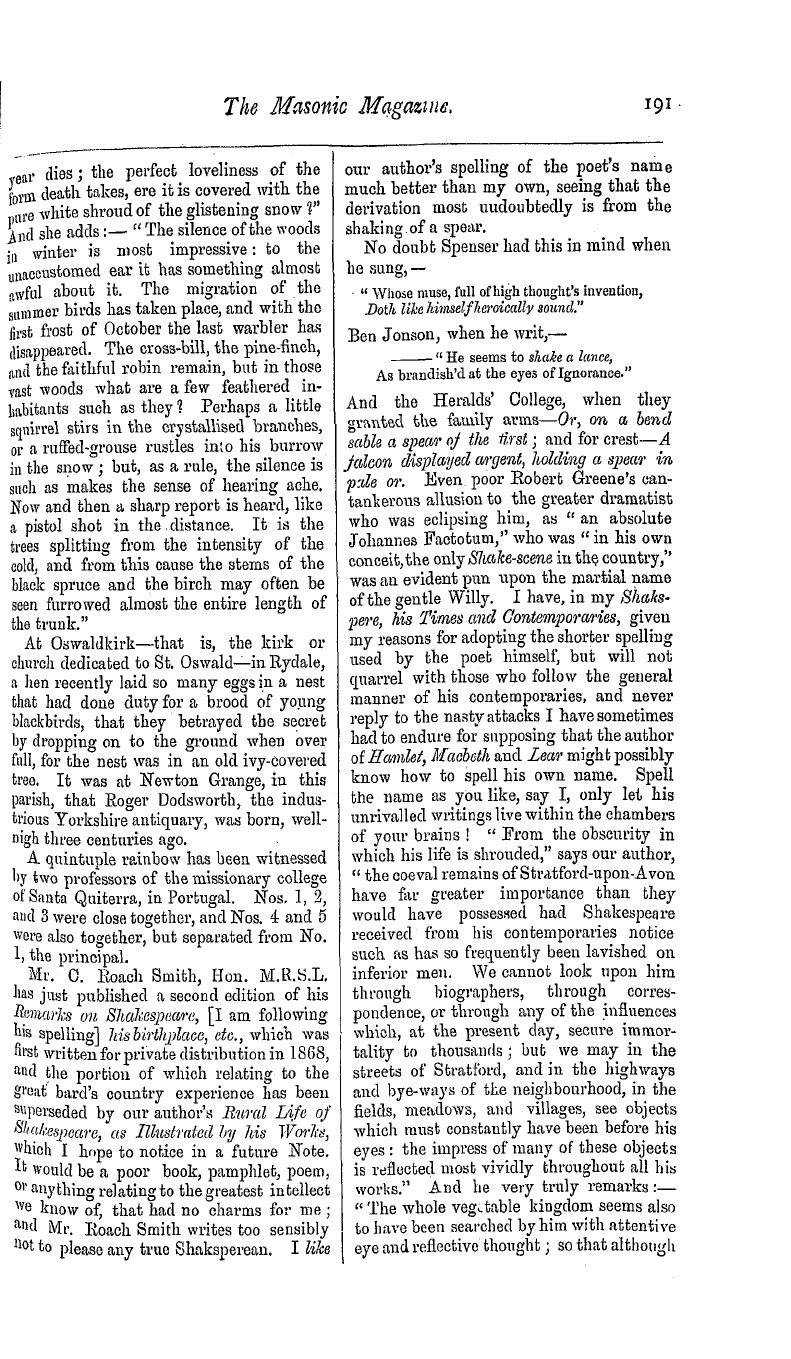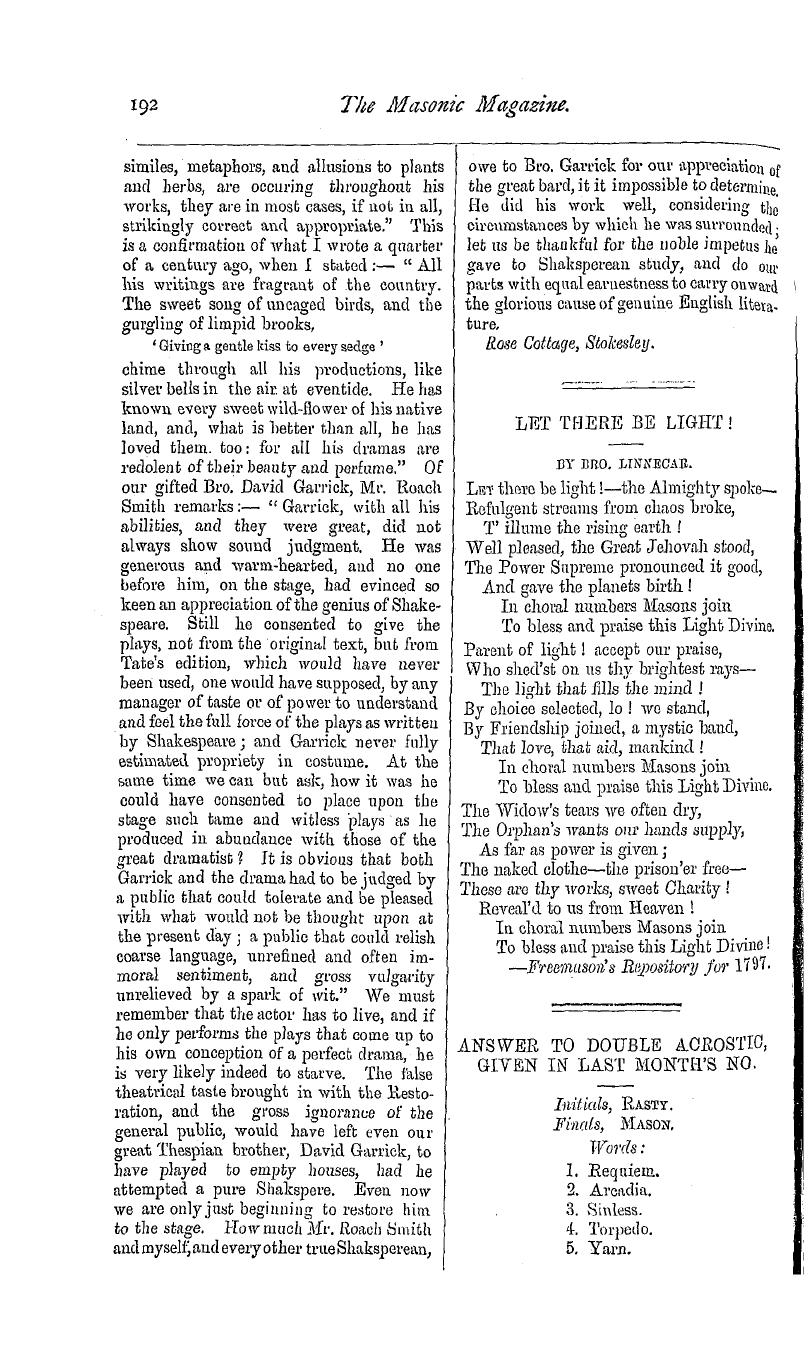Note: This text has been automatically extracted via Optical Character Recognition (OCR) software.
Ar04600
n , , ffUffl ) or Chaldaic paraphrase of Ou-T-eloSj whose authority is undisputed , translates Dent , xxiii . 6 : " Let Reuben live in life eternal . Let him not die in t | , e second death . " ]) avid Levi , a learned Jew of modern
times contends that his ancient brethren were well acquainted with the doctrine of the resurrection and a future state in the davs of Isaiah ; nay , he adds , " I am confident that these doctrines were taught by Moses . " And we have the authority of
Jesus Christ for the same opinion , for He attributes the want of faith in the Jews to their ignorance of the writings of their law-river . " Had ye believed Moses , ye would have believed me , for he wrote ol me ; but if ye believe not his writings , how shall ye believe my word . " * His answer , also to the insidious question of the Sadducees concerning the seven
brethren who had married one wife : "ye do err , not knowing the scriptures , " plainly implies that the doctrine which they denied , viz ., the resurrection of the dead , was contained in the Scriptures . J The Samaritans rejected all the sacred writings , except the books of Moses ; and
yet from that single source they gathered such knowledge as convinced them of the certainty of a future state . § However this may be , the anaglyph before us contains an indisputable reference to the , triumph of eternity over time ;
which forms indeed a prominent doctrine in the Hermesian writings . They contain metaphysical treatises in the form of dialogues between Hermes and Thoth , winch throughout speak of the pre-existence ° ! the soul , its transmigrations and final beatitude . | | The symbol of Time is confined within
certain concentric circles ; or , in other words , within the operations which form we limits of time ; while eternity is represented by the unlimited space in which 'lie compound figure of the deity is placed , tt is therefore , to be considered as an emblem ot the resurrection and a future state
symbolised equally by the Euresis of the mysteries , and by the ear of corn which is placed on the tablet as a permanent hieroglyphic of the Hermesian Spurious Freemasonry . The aphanism was celebrated in darkness , and the Euresis in light .
Darkness was an emblem of death , and death was a prelude to resurrection . And hence darkness and light , the prototypes of night aud day , were ¦ sometimes symbolized by a black and white worm , which is represented as continually . gnawing the root of the tree of life . It will at once be seen , thei'efore , in what manner the doctrine of the resurrection was inculcated
and exemplified in these remarkable institutions . It is clear from Origen and others , * that the Egyptians possessed a knowledge of the immortality of the soul , the resurrection of the body , and a future life of happihess or misery . Thus Porphyry , in Eusebiusj says
it was the general belief that " souls were immortal ; and that those which have belonged to pious and just persons were taken up to heaven ; although their bodies were subjected to various torments . " And Strabo considers this to have been the
first principle of their theology . They believed that this present life is but the life of embryo existence , a mere conception , but that death is a generation or birth into true life . This is fully evidenced by the custom of
embalming the corpses of their deceased friends . Diodorus Siculus asserts that " the Egyptians deem this life as of very inferior consequence ; but they have' a great value for a quiet resting-place for the body after death . Hence they consider the habitations of the living as mere
temporary places to repose in during the short journey of this life ; while they call the sepulchres of the dead everlasting dwellings , and therefore bestow upon them great care and incredible expense . Their belief in a future state is confirmed
by the practice of allowing a superb funeral to the bodies ef the just , who were represented under the form of Osiris , and esteemed worthy of divine honours , as deified mortals ; while those of the wicked were excluded from funeral rites , and cast disgracefully into neglected ditches , and
Note: This text has been automatically extracted via Optical Character Recognition (OCR) software.
Ar04600
n , , ffUffl ) or Chaldaic paraphrase of Ou-T-eloSj whose authority is undisputed , translates Dent , xxiii . 6 : " Let Reuben live in life eternal . Let him not die in t | , e second death . " ]) avid Levi , a learned Jew of modern
times contends that his ancient brethren were well acquainted with the doctrine of the resurrection and a future state in the davs of Isaiah ; nay , he adds , " I am confident that these doctrines were taught by Moses . " And we have the authority of
Jesus Christ for the same opinion , for He attributes the want of faith in the Jews to their ignorance of the writings of their law-river . " Had ye believed Moses , ye would have believed me , for he wrote ol me ; but if ye believe not his writings , how shall ye believe my word . " * His answer , also to the insidious question of the Sadducees concerning the seven
brethren who had married one wife : "ye do err , not knowing the scriptures , " plainly implies that the doctrine which they denied , viz ., the resurrection of the dead , was contained in the Scriptures . J The Samaritans rejected all the sacred writings , except the books of Moses ; and
yet from that single source they gathered such knowledge as convinced them of the certainty of a future state . § However this may be , the anaglyph before us contains an indisputable reference to the , triumph of eternity over time ;
which forms indeed a prominent doctrine in the Hermesian writings . They contain metaphysical treatises in the form of dialogues between Hermes and Thoth , winch throughout speak of the pre-existence ° ! the soul , its transmigrations and final beatitude . | | The symbol of Time is confined within
certain concentric circles ; or , in other words , within the operations which form we limits of time ; while eternity is represented by the unlimited space in which 'lie compound figure of the deity is placed , tt is therefore , to be considered as an emblem ot the resurrection and a future state
symbolised equally by the Euresis of the mysteries , and by the ear of corn which is placed on the tablet as a permanent hieroglyphic of the Hermesian Spurious Freemasonry . The aphanism was celebrated in darkness , and the Euresis in light .
Darkness was an emblem of death , and death was a prelude to resurrection . And hence darkness and light , the prototypes of night aud day , were ¦ sometimes symbolized by a black and white worm , which is represented as continually . gnawing the root of the tree of life . It will at once be seen , thei'efore , in what manner the doctrine of the resurrection was inculcated
and exemplified in these remarkable institutions . It is clear from Origen and others , * that the Egyptians possessed a knowledge of the immortality of the soul , the resurrection of the body , and a future life of happihess or misery . Thus Porphyry , in Eusebiusj says
it was the general belief that " souls were immortal ; and that those which have belonged to pious and just persons were taken up to heaven ; although their bodies were subjected to various torments . " And Strabo considers this to have been the
first principle of their theology . They believed that this present life is but the life of embryo existence , a mere conception , but that death is a generation or birth into true life . This is fully evidenced by the custom of
embalming the corpses of their deceased friends . Diodorus Siculus asserts that " the Egyptians deem this life as of very inferior consequence ; but they have' a great value for a quiet resting-place for the body after death . Hence they consider the habitations of the living as mere
temporary places to repose in during the short journey of this life ; while they call the sepulchres of the dead everlasting dwellings , and therefore bestow upon them great care and incredible expense . Their belief in a future state is confirmed
by the practice of allowing a superb funeral to the bodies ef the just , who were represented under the form of Osiris , and esteemed worthy of divine honours , as deified mortals ; while those of the wicked were excluded from funeral rites , and cast disgracefully into neglected ditches , and
















































